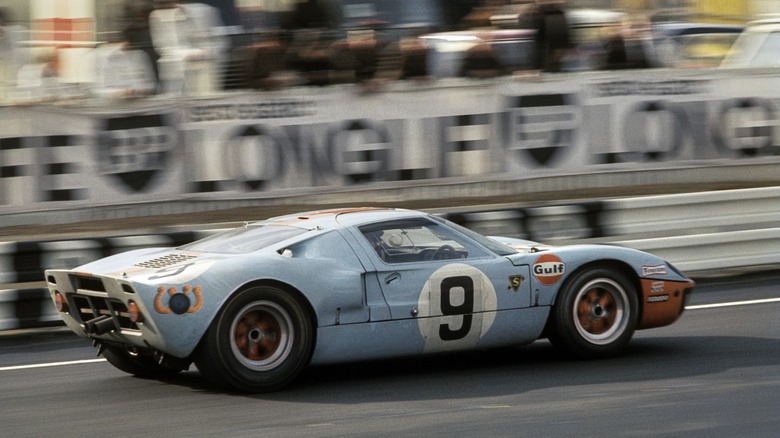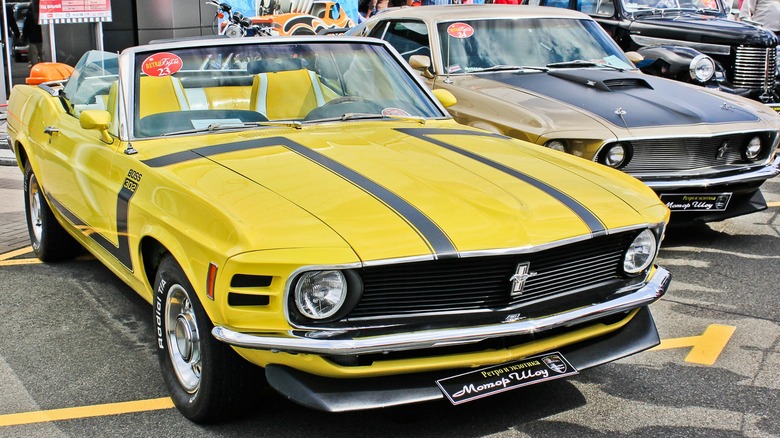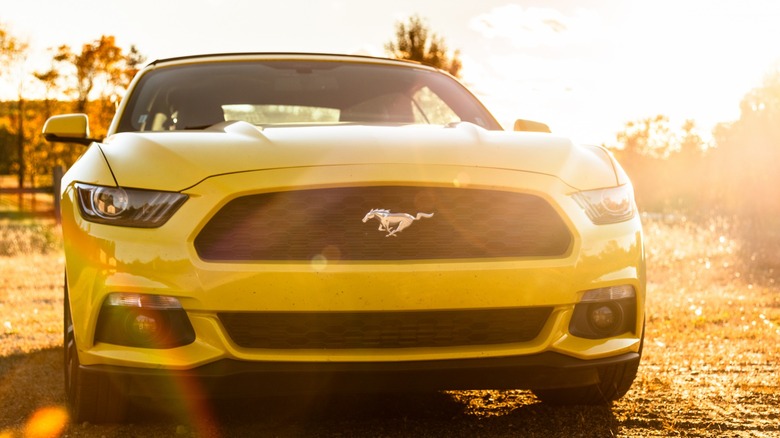Everything You Need To Know About Ford's 302 Engine
Few automobile engines gain first-name status with the general public. You could make a case for the venerable Small Block Chevy and the overly generic Big Block from Ford, Chevy, and Chrysler. The Hemi name got increased recognition from the "That thing got a Hemi in it?" television commercials. Another well-known powerplant is the 302-cubic-inch 5.0-liter V8 from Ford.
Ford's 302-cubic-inch small block engine, known simply as 302 in most circles, powered various Blue Oval automobiles over the years. Ford's early 302-powered cars included the Mustang, Cougar, Fairlane, Torino, Fairmont, Crown Victoria, and Ranchero. The versatile 302 also powered several Ford pickup trucks and vans over the years. In addition, Mercury used the 302 in many of its mid- to full-size cars.
While the 302 was a popular and well-known engine, Ford transitioned to the metric naming convention in the late 1970s and early 1980s, switching from 302 to 5.0. The 5-O's name recognition likely stems from the prominent 5.0 badging present on nearly every high-performance Mustang since 1982. However, many people outside the Fox Body Ford Mustang fan base know Ford's Five-O engine by name.
History of the 302-cubic-inch V8 from 1968 through 1981
The famed 24 Hours of Le Mans instituted new rules for 1968 requiring smaller displacement engines than allowed in previous years. That change led to Ford creating the 302 as the new engine to power its GT40 racecar. To qualify the new powerplant for other forms of racing, Ford quickly began offering it in production automobiles as early as 1968.
The original 1968 Ford 302, produced in Windsor, Ontario, Canada, shared a 4.00-inch diameter cylinder bore with its 289-cubic-inch stablemate but used a longer, 3.00-inch stroke, forged steel crankshaft to increase displacement. In 1968, the Windsor 302 generated 210 brake horsepower, about the same as the 289. Through his partnership with Ford, Carroll Shelby realized the 302 had more potential, evidenced by the Shelby GT350 Mustang's 302 putting out 306 hp.
The following year, Ford installed a new cylinder head design featuring crescent-shaped combustion chambers to create the Boss 302. Ford specifically developed the 290-horsepower Boss 302 and mass-produced the Boss 302 Mustang to allow the engine's inclusion into SCCA Trans-Am racing.
Government mandates requiring reduced exhaust emissions and improved fuel economy throttled the performance aspirations of Ford's 302 engineers for most of the 1970s. However, throughout the 1980s, horsepower ratings, again, were on the rise as the 302 regained popularity in the Mustang GT, rebranded as the High Output 5.0.
The rise of Ford's High Output 5.0
The 1982 Windsor 302 had horsepower rated in the 150s. However, the High Output or HO version enjoyed multiple improvements over the next few years, leading to a 210 horsepower rating in the 1985 Mustang GT and 235 horsepower in the 1993 Ford Mustang SVT Cobra.
Ford retired the 5.0 HO from the Mustang lineup after the 1995 model year. Less powerful 5.0 variants carried on in the automaker's pickup truck and SUV lines until discontinued in the early 2000s. However, the 5.0 came back with a vengeance in 2011.
The redesigned 5.0 Coyote engine featured in the 2011 Mustang GT displaced closer to 5.0 liters than the previous version and slightly more than 302 cubic inches, with just over 4.94 liters. The 2011 5.0 featured twin overhead camshafts with variable intake and exhaust valve timing for increased performance and efficiency. It also featured Ford's modular engine design. Traditional engine block designs use increased mass in specific areas to withstand the forces created by generating more horsepower. However, the 5.0 Coyote block has internal web bracing in critical areas to withstand those forces and maintain a lighter-weight powerplant.
Power output for the first-generation 5.0 Coyote engine is rated at 412 horsepower with 390 lb-ft of torque, a substantial increase over any production 302-cubic inch Ford engine. The second generation 5.0 Coyote rolled out in 2015 with 435 horsepower and 400 lb-ft of torque, while the 2018 Gen-3 5.0 Coyote upped the ante once again, delivering 460 horsepower and 420 lb-ft of torque. Finally, Ford advertises the all-new 2024 Gen-4 5.0 Coyote engine with 486 horsepower and 418 lb-ft of torque.


